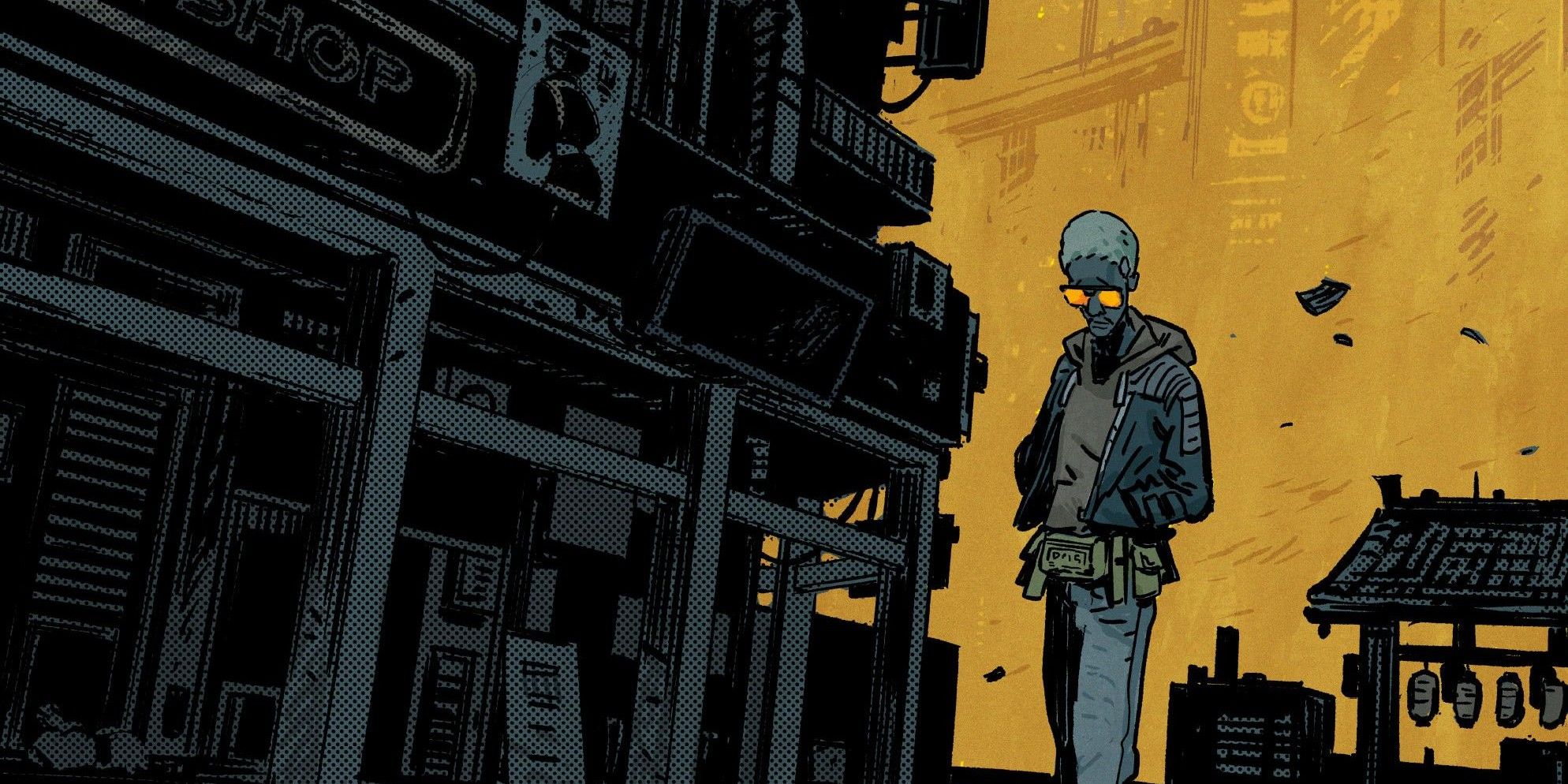Cyberpunk 2077: Blackout #1
- Writer
- Bartosz Sztybor
- Artist
- Roberto Ricci
- Letterer
- Frank Cvetkovic
- Cover Artist
- Roberto Ricci, Fabiana Mascolo
- Publisher
- Dark Horse Comics
- Price
- $3.99
- Release Date
- 2022-06-01
- Colorist
- Fabiana Mascolo
For all its failed promises and technical faults, Cyberpunk 2077 has been the talk of the town ever since its release in late 2020, partly because of its lost potential but also because of the wondrous streetscapes of Night City. A modern multicultural metropolis, Night City, has everything — from gang wars to corrupt capitalists, the city thrives on flamboyance and decadence. Yet, despite all outward appearances, nobody is happy. Dark Horse Comics presents the tale of a braindance technician who helps people escape their reality while having none for himself. Written by Bartosz Sztybor with artwork from Roberto Ricci and Fabiana Mascolo and lettering by Frank Cvetkovic, Cyberpunk 2077: Blackout #1 offers a light in the darkness.
The third comic book series from Dark Horse based on CD Projekt Red’s Cyberpunk 2077 video game, Cyberpunk 2077: Blackout #1, exposes Night City’s hypocrisy of a “good” life. Arturo is a braindance repairman who goes door to door, office to office, troubleshooting BD devices for people of all strata. He is very good at his job, and people are grateful for his assistance, but, past the ecstatic faces, he can see the pain inside them. His friend Al-Beta wants him to stop whining and use his talent to start helping people. Still, Arturo keeps looking for an excuse until one day, he learns how the constant blackouts have compromised the bank security systems.
Every day when Arturo goes out the door, a dark thought rambles around in his brain, reminding him of his inefficacy in the larger system. It is true that he helps people alleviate their pain through reliving the past in a personalized dreamscape. However, he realizes that sweet memories are nothing more than drugs, and his profession has turned him into a glorified drug dealer, whereas the technology and his skills might help people confront their inner demons rather than brush them aside. Cyberpunk 2077: Blackout #1 has all the spunk and rush of the original video games with a minor adjustment. As the issue follows Arturo through his work/life troubles and inner strife, the narrative maintains a steady pace that keeps the readers engrossed in the cogs and wheels of the year 2077.
From sky-hugging edifices to neon-entrenched ghettos, Night City is a dystopian metropole where dreams come to crash and burn. Artist Roberto Ricci’s rich linework captures every aspect of an urban landscape, amplifying the stuffed, overcrowded atmosphere with a bustle of energy. While the look and feel of the artwork take definite inspiration from manga-style illustrations, with the caricaturish nature of the figures adding to the wackiness, Ricci’s attention to small details like hanging wires and implants really enriches the book. In conjunction, colorist Fabian Mascolo uses complementary shades to fill the negative spaces behind the characters, signifying the change in emotions with every scene. Although flashbacks are left in black and white, the Ben-Dots in the foreground helps the reader focus on the subject.
Cyberpunk 2077: Blackout #1 is a well-written first issue that immediately pulls the reader into the plight of an average Joe with a relatable premise. Bartosz Sztybor focuses the entire comic book on world-building. While the question may arise about such need since the socio-economic landscape of Night City has been much discussed before, seeing the world of Cyberpunk 2077 from the eyes of the overlooked and the forgotten opens new avenues of storytelling. As the issue progresses toward the end, the story turns down a different path, giving Arturo a new lease on his life.
Read Next





